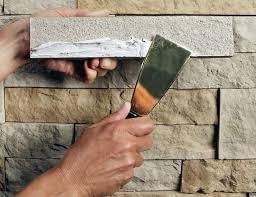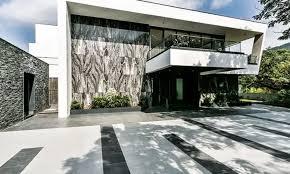Table of Contents
- Introduction to Wet Cladding
- Types of Wet Cladding Materials
- Advantages of Wet Cladding
- Application Techniques
- Design Considerations
- Maintenance and Durability
- Future Trends in Wet Cladding
- Conclusion
- Faq's
Introduction to Wet Cladding
Wet cladding, also commonly referred to as render or plaster cladding, is a construction technique where a wet mixture is applied to the exterior walls of a building to create a protective and decorative layer. This method has been used for centuries, evolving significantly over time with the introduction of new materials and application techniques. Wet cladding offers a seamless and customizable facade, providing both aesthetic appeal and functional benefits such as weather protection and insulation. This method contrasts with dry cladding systems that involve mechanically attaching pre-manufactured panels to the building's exterior.
Types of Wet Cladding Materials
- Render: A cement-based mixture applied over walls, providing a smooth finish and customizable textures.
- Stucco: A type of render made from lime, sand, and water, effective for traditional and modern designs.
- Brick Slip Systems: Thin slices of brick adhered to a substrate, mimicking traditional brickwork.
- Ceramic Tiles: Glazed or unglazed tiles offering durability and a range of colors and styles.
- Natural Stone: Slabs of stone providing a premium finish and excellent weather resistance.
- Synthetic Panels: Lightweight and versatile options that offer various design aesthetics.
 Wet cladding,Cupa Stone
Wet cladding,Cupa Stone
Advantages of Wet Cladding
- Aesthetic Versatility: Wide range of finishes and textures to suit different architectural styles.
- Weather Resistance: Protects buildings from moisture and adverse weather conditions.
- Thermal Insulation: Improves energy efficiency by reducing heat loss.
- Fire Resistance: Certain materials provide better fire protection.
- Sound Insulation: Enhances acoustic performance in urban environments.
 Advantages of Wet Cladding, RachTr
Advantages of Wet Cladding, RachTr
Application Techniques
- Preparation of the Surface: Cleaning and priming the wall surface for better adhesion.
- Mixing and Application: Following manufacturer guidelines for mixing materials and applying in uniform layers.
- Texture and Finish: Employing tools for texturing or smoothing the surface as needed.
- Curing: Allowing the material to cure properly to achieve maximum strength.
- Sealing Joints: Ensuring all joints and seams are properly sealed to prevent water ingress.
Design Considerations
- Climate: Selecting materials suitable for the local weather conditions.
- Building Codes: Adhering to local regulations and standards for safety and performance.
- Aesthetic Integration: Ensuring cladding complements the overall architectural design.
- Environmental Impact: Choosing eco-friendly materials and techniques.
Maintenance and Durability
Regular inspections and cleaning are essential for maintaining the integrity of wet cladding. Common maintenance tasks include:
- Cleaning Surfaces: Removing dirt and algae to maintain appearance.
- Inspecting for Damage: Checking for cracks or chips in the material.
- Reapplying Sealants: Ensuring joints remain waterproof to prevent moisture intrusion.
Future Trends in Wet Cladding
- Sustainable Materials: Increased focus on eco-friendly and recyclable materials.
- Smart Technologies: Integration of sensors for moisture detection and climate control.
- Customization: Advancements in manufacturing allowing for bespoke designs.
- Hybrid Systems: Combining wet cladding with other façade technologies for enhanced performance.
 Future Trends in Wet Cladding,WFM media
Future Trends in Wet Cladding,WFM media
Conclusion
Wet cladding is an innovative façade solution that offers aesthetic appeal, weather protection, and energy efficiency. With a variety of materials and application techniques available, it is essential to consider design, maintenance, and future trends to maximize the benefits of wet cladding in modern building construction.







